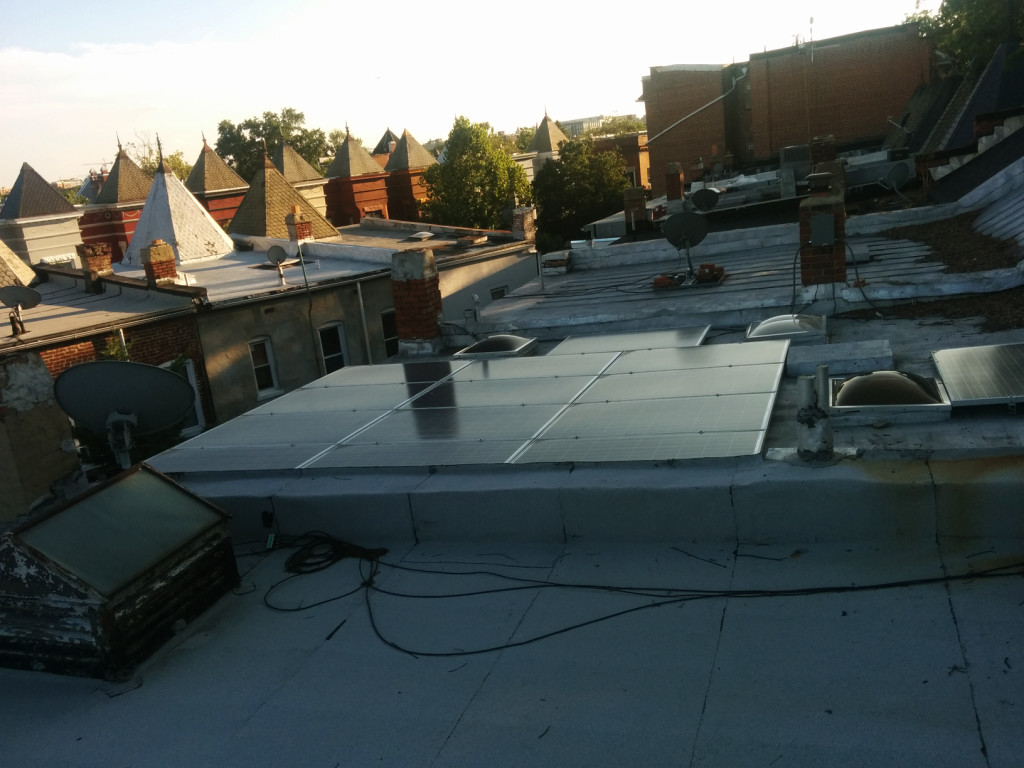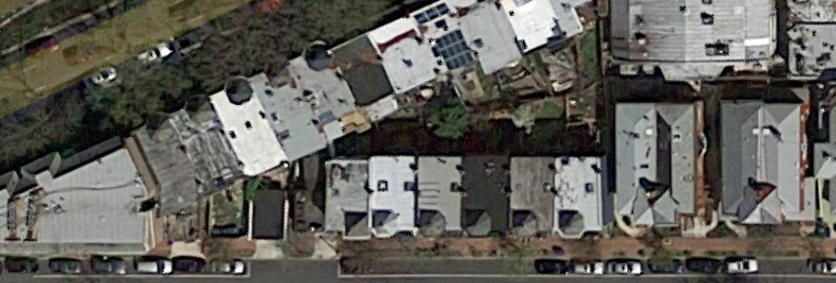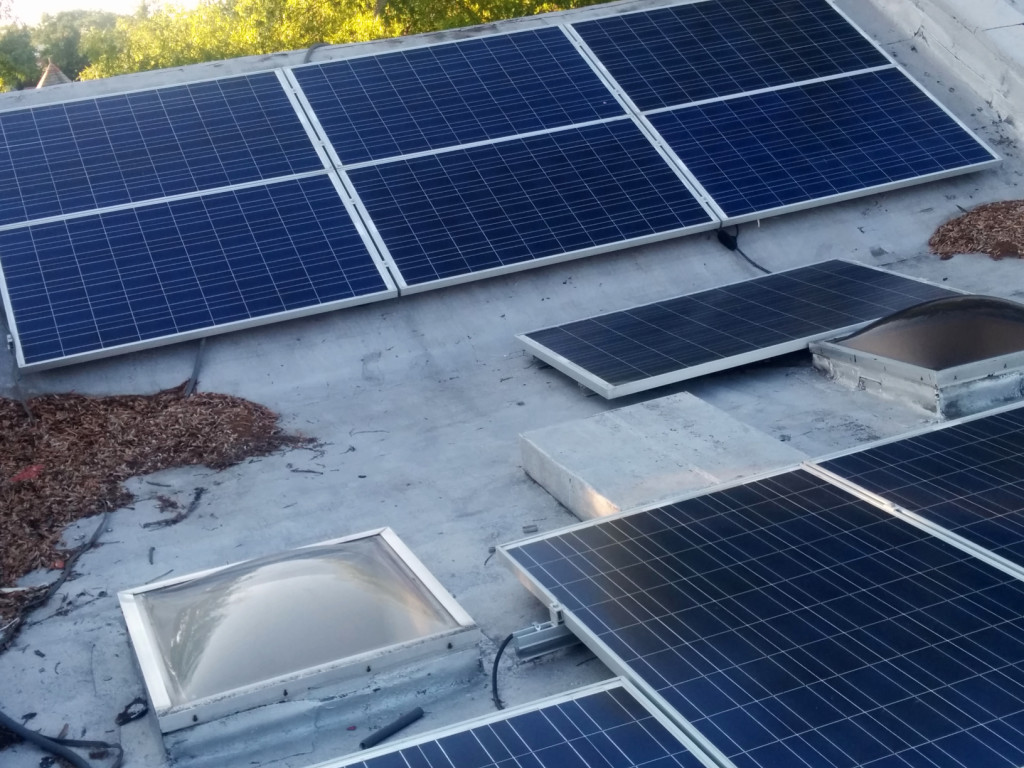In August of 2014, about a year prior to writing this post, Arli’s rooftop solar on her row house in Washington DC started to generate power. Here is a bit of what we learned. 

Arli’s system is 20 panels, for a total of 5kW potential generation. 14 of the panels lie flat on her somewhat sloped south facing roof, which means they are at too shallow of an angle to collect energy optimally.
 We knew this going in, not using a steel grid to slope the panels lowered our costs somewhat, but in hindsight perhaps we should have been more careful on this point. Our best mid-day generation tends to peak around 3.5kW, which is a bit of a disappointment on a 5kW system.
We knew this going in, not using a steel grid to slope the panels lowered our costs somewhat, but in hindsight perhaps we should have been more careful on this point. Our best mid-day generation tends to peak around 3.5kW, which is a bit of a disappointment on a 5kW system.Another disappointment is how rare it is for a house in DC to have solar. DC is a great town for solar – there’s lots of sunshine, there are good incentives, and DCSun is very active in creating bulk purchase agreements (we were in the 2014 Ward 5 bulk purchase). Bulk purchase obviously helps lower costs, but more importantly, it reduces, by a lot, the unknowns and uncertainties for homeowners. Without DCSun, we would not have installed a rooftop solar unit.
If you’re on the DCSun mailing list you get the impression that DC is a solar town, but if you just look at Google satellite images of DC, it’s quickly apparent that solar adoption is in single digits. This satellite image shows Arli’s house and her fifteen or so closest neighbors. That lonely solar (top, middle); that’s Arli.

And a third problem has been integration of Arli’s system into the grid. We were still on the phone with Pepco reps in January, five months after interconnect, finally (we think) working out kinks related to billing and to our net-meter.
But there is also good news. The most important is that yes, solar is working. Her system will generate about 5 megawatt-hours (5MWh) of energy this year. To compare, the two nukes at Indian Point generate about 16TWh/year (terawatt-hours), so Arli’s roof has, roughly 0.0000003 of the generation capacity of Indian Point. That’s a drop in the bucket, but the idea of rooftop solar is to have a huge number of drops. For example, if you scaled up so that most of the 300,000 housing units in DC (2010 census) each generated about 5MWh, you’d have about a tenth of an Indian Point. That would be hugely significant, it would rewrite the rules for energy in DC, but it’s also a long way off.
In DC Arli’s generation qualifies for Solar Renewable Energy Credits (SRECs). Each time a megawatt-hour of energy is generated, you get one SREC, which can be sold on an exchange. It’s a complex system, but in her first year Arli has generated and sold 4 SRECs, for somewhat less than $2000. Future SRECs will likely be worth less, but SRECs are still great for offsetting costs.
And of course there is the value of generated electricity. As I mentioned, Arli’s panels will generated over 5MWh of energy in the first year. Most of that will offset energy consumed in the house, because her energy consumption exceeds generation. It’s hard to value that power. Pepco bills say we should use the value 9.4 cents/KWh to value our generated power. I have no idea how they come up with that figure. If you look at what Arli actually pays, like everything in the energy business it’s complicated, but her actual rate seems to be closer to 11 cents/kWh. And since her generation offsets her usage, using the figure 11 cents seems appropriate. So, her 5MWh of yearly generation has a value of about $550.

Payback time? Again, hard to determine with precision. Arli’s $550 generation per year is about 5% of the cost of the system. Considering generation alone it would be about a 20 year payback, assuming AC rates don’t rise. But there is also the federal Residential Renewable Energy Tax Credit, which is 30% of the cost of the system. And the SRECS, which are sold in a dynamic market and thus are hard to value exactly, also contribute significantly to reducing payback time. Given all the factors, payback time is likely less than ten years. Plus, there is an increment to the value of the house, again unknown, but probably not too different than the cost of the system, at least now. If cost of a similar system is much less in the future, the boost to the house value then will obviously be smaller.
As an individual homeowner, you can’t dip your toe in the waters of rooftop solar. There’s no point in placing a single panel up there and just seeing how it works out. As you can see on our roof, you need to go all in, fill the space to generate as much power as possible. As a country, we certainly have not decided to go all in. But, things change, and at some point the satellite view will show a very different DC roofscape.